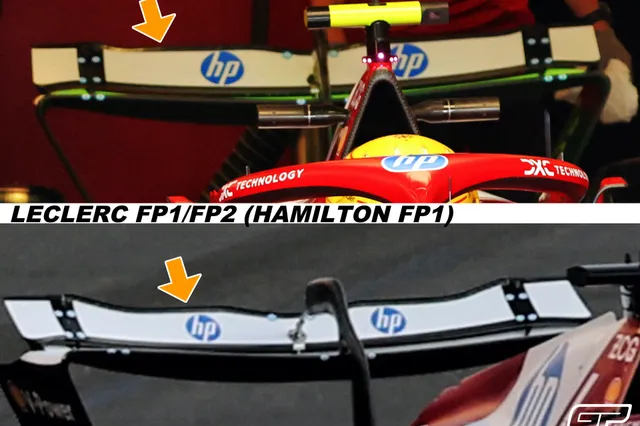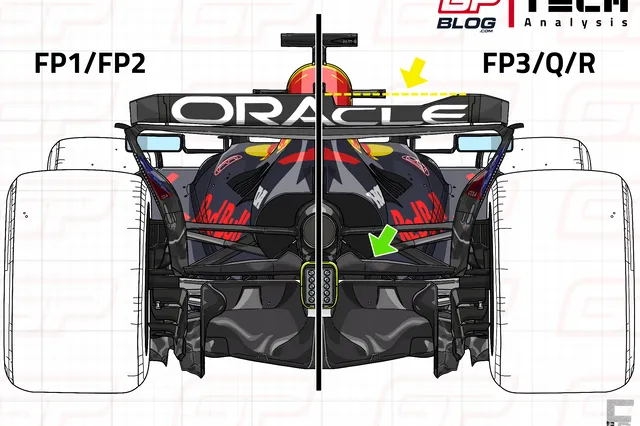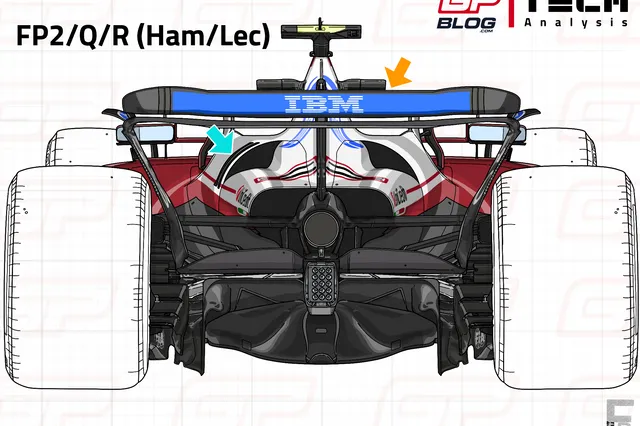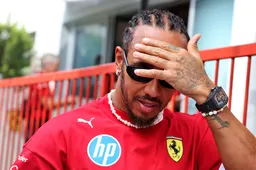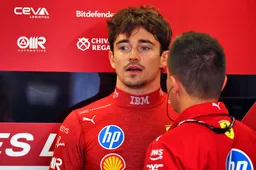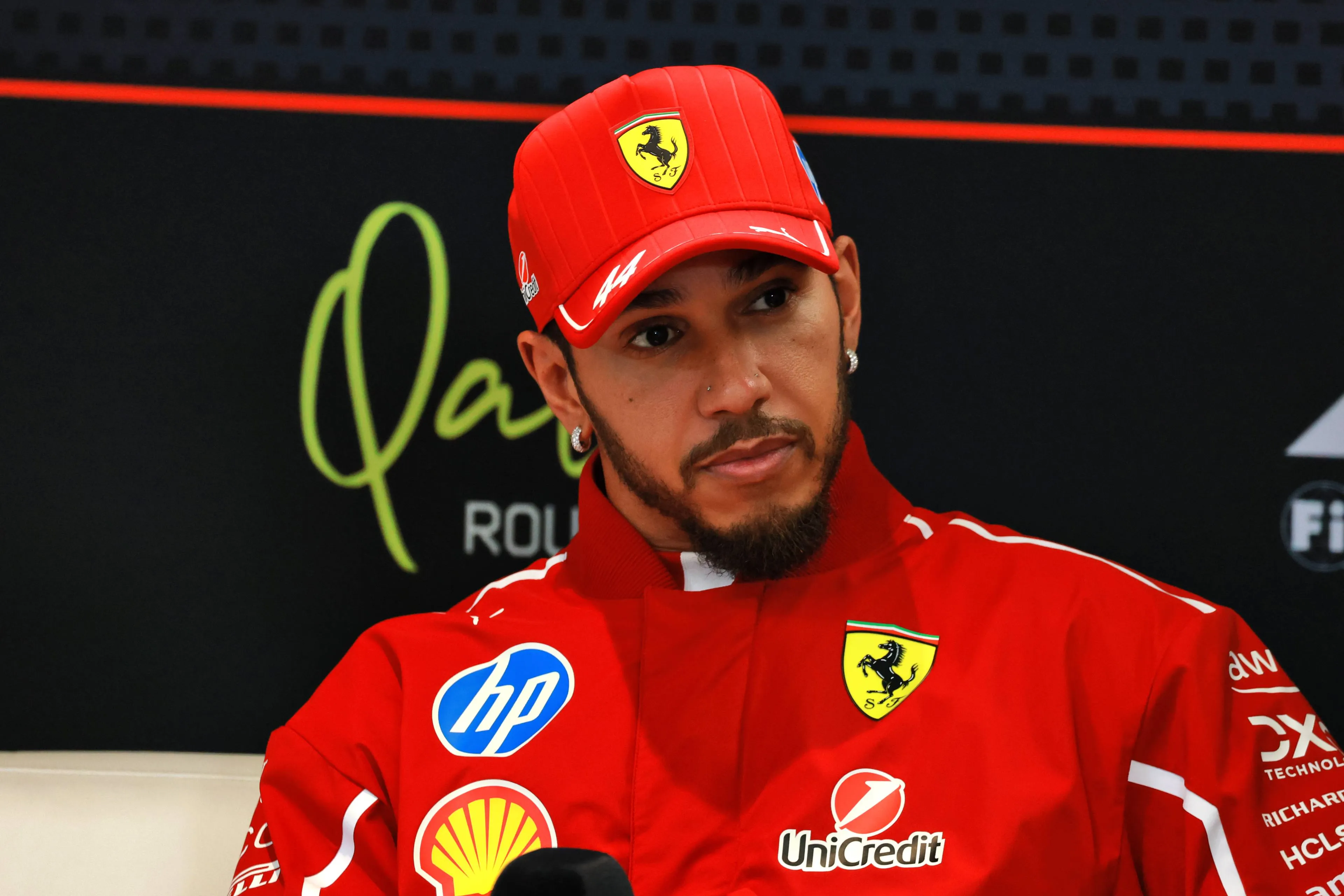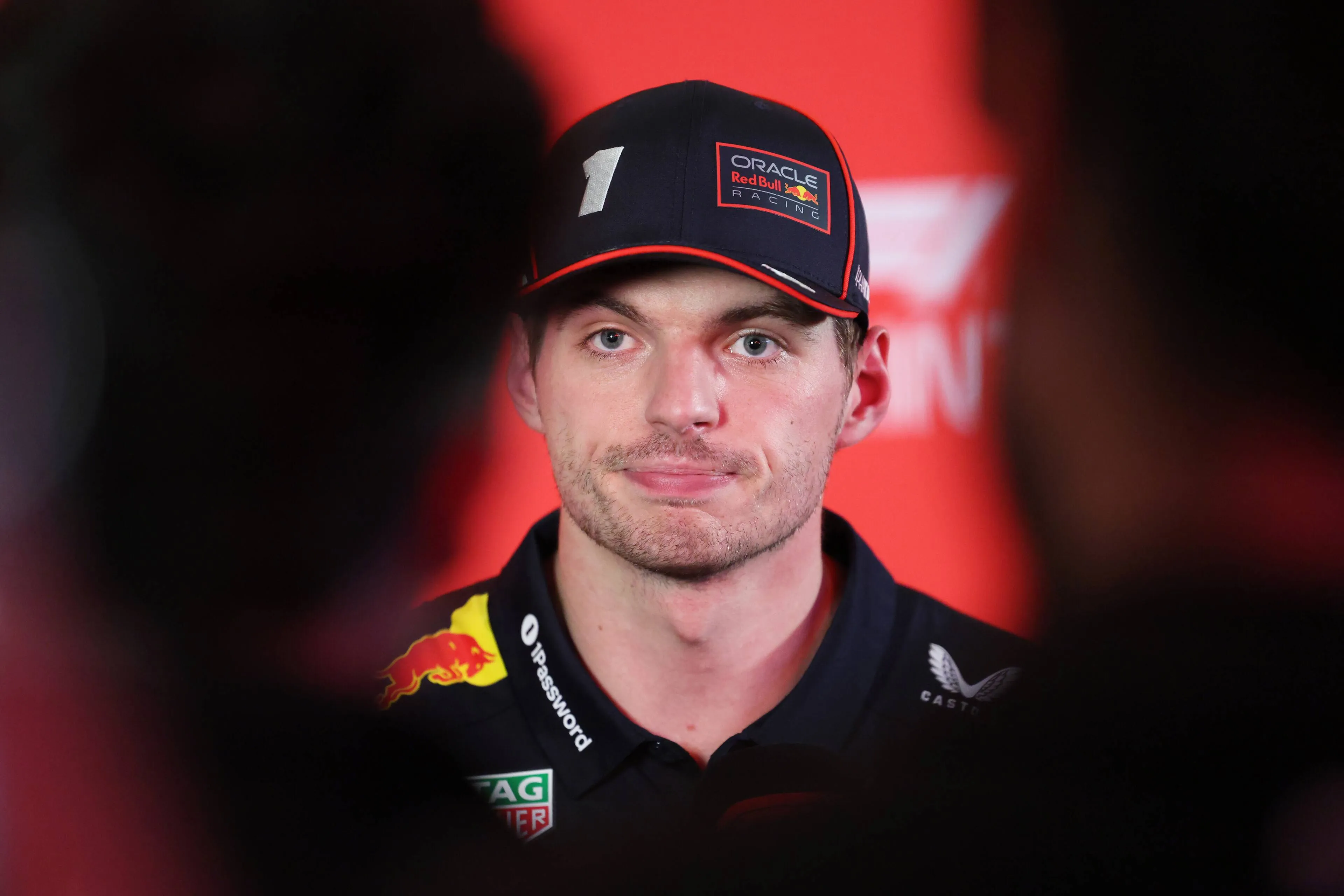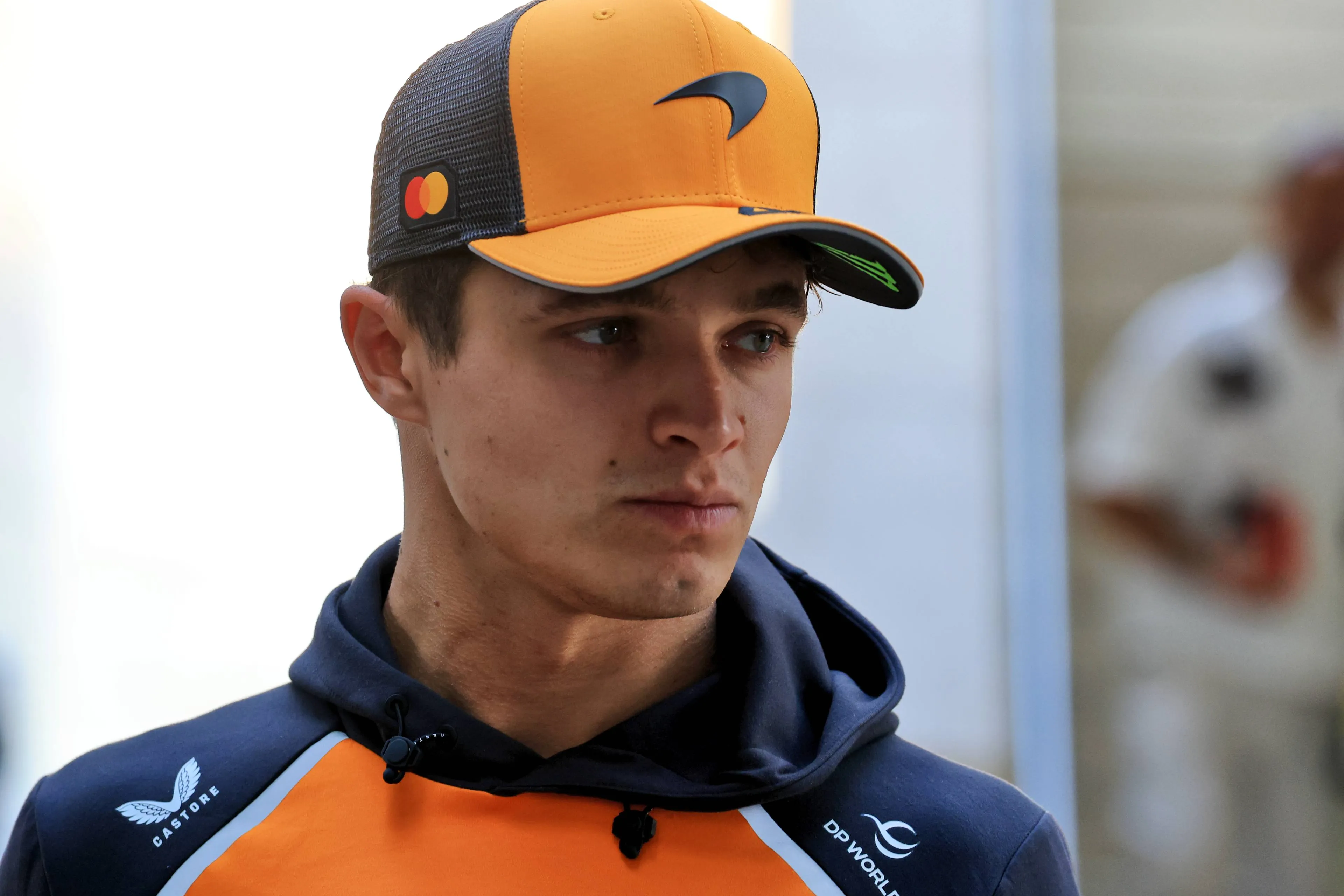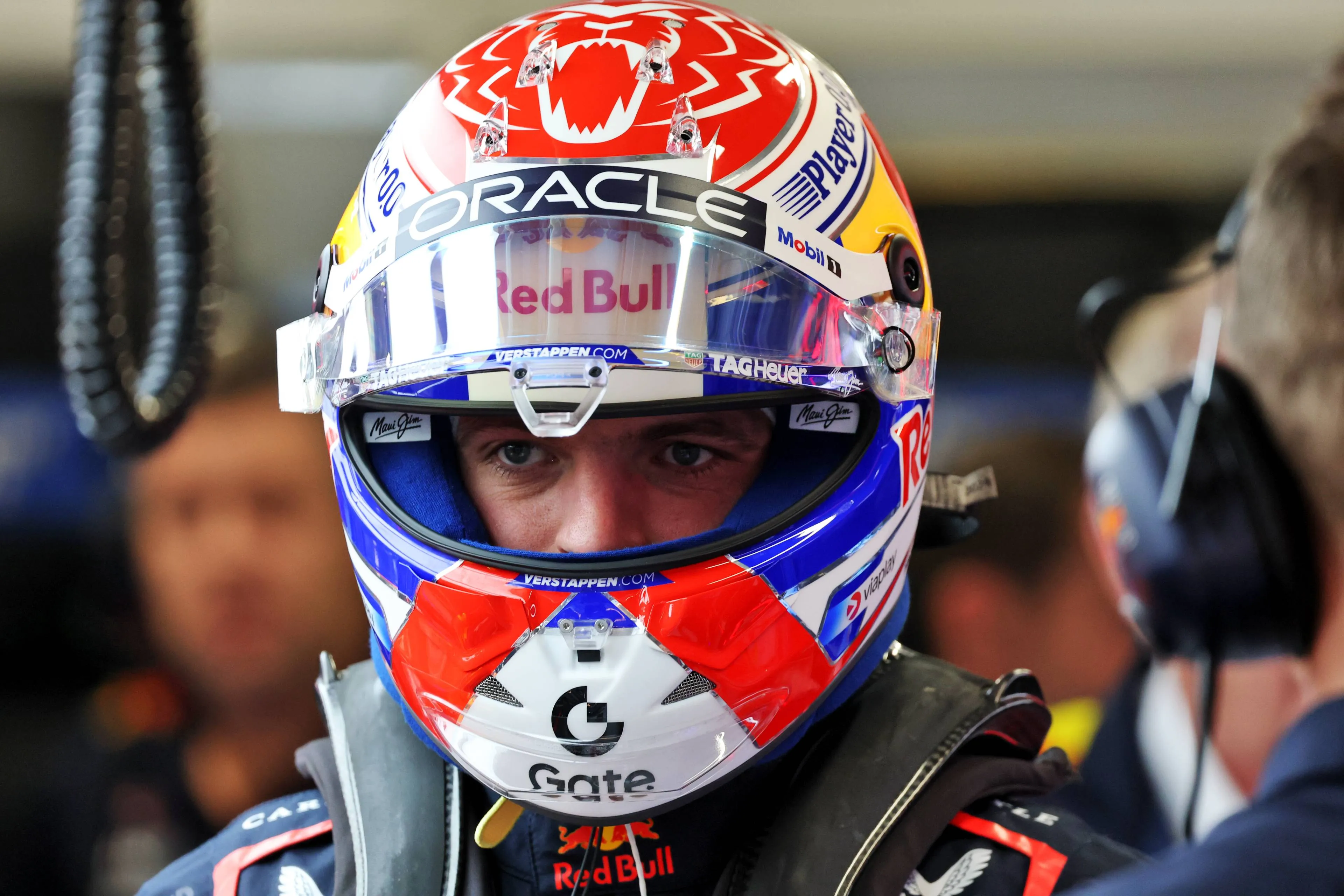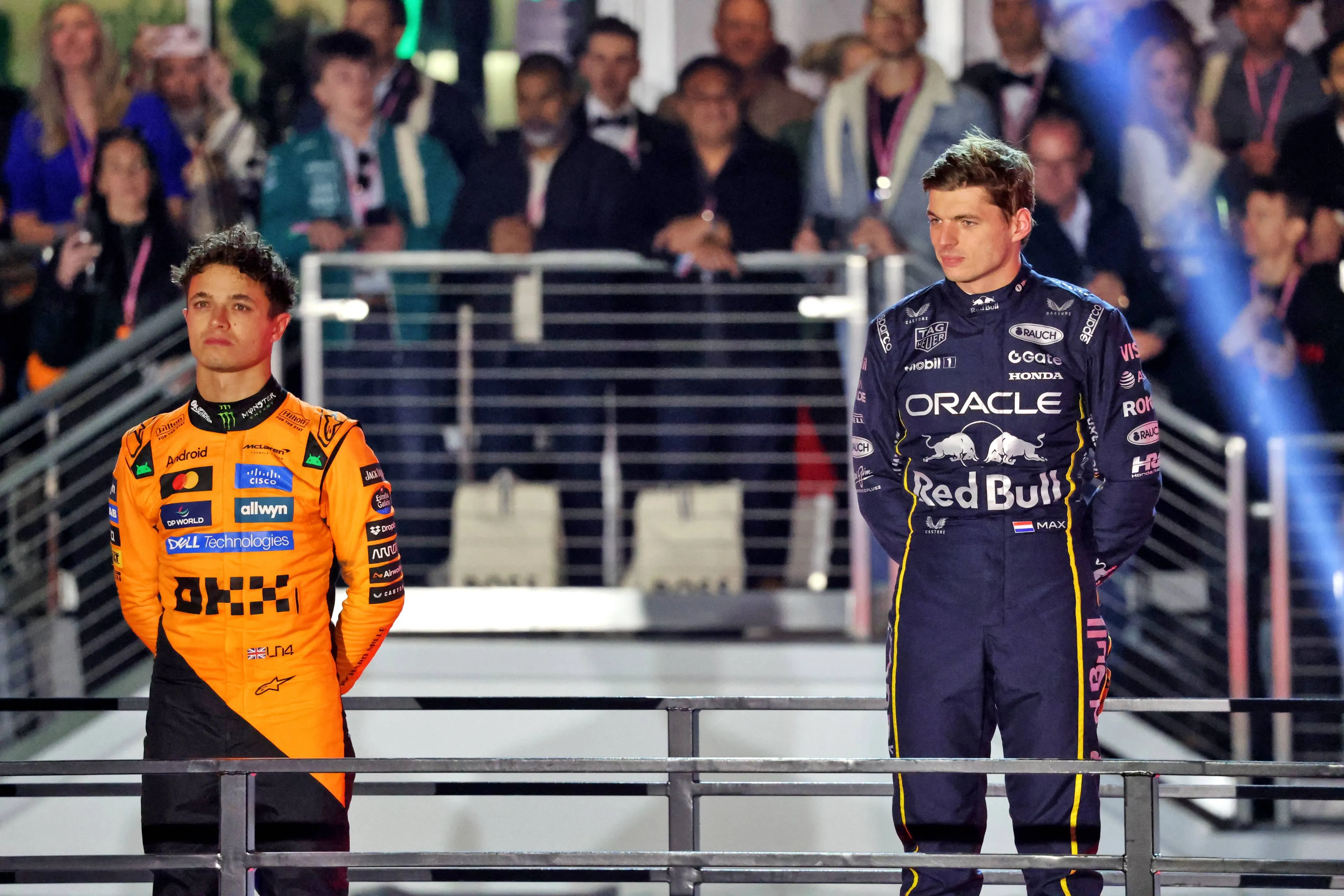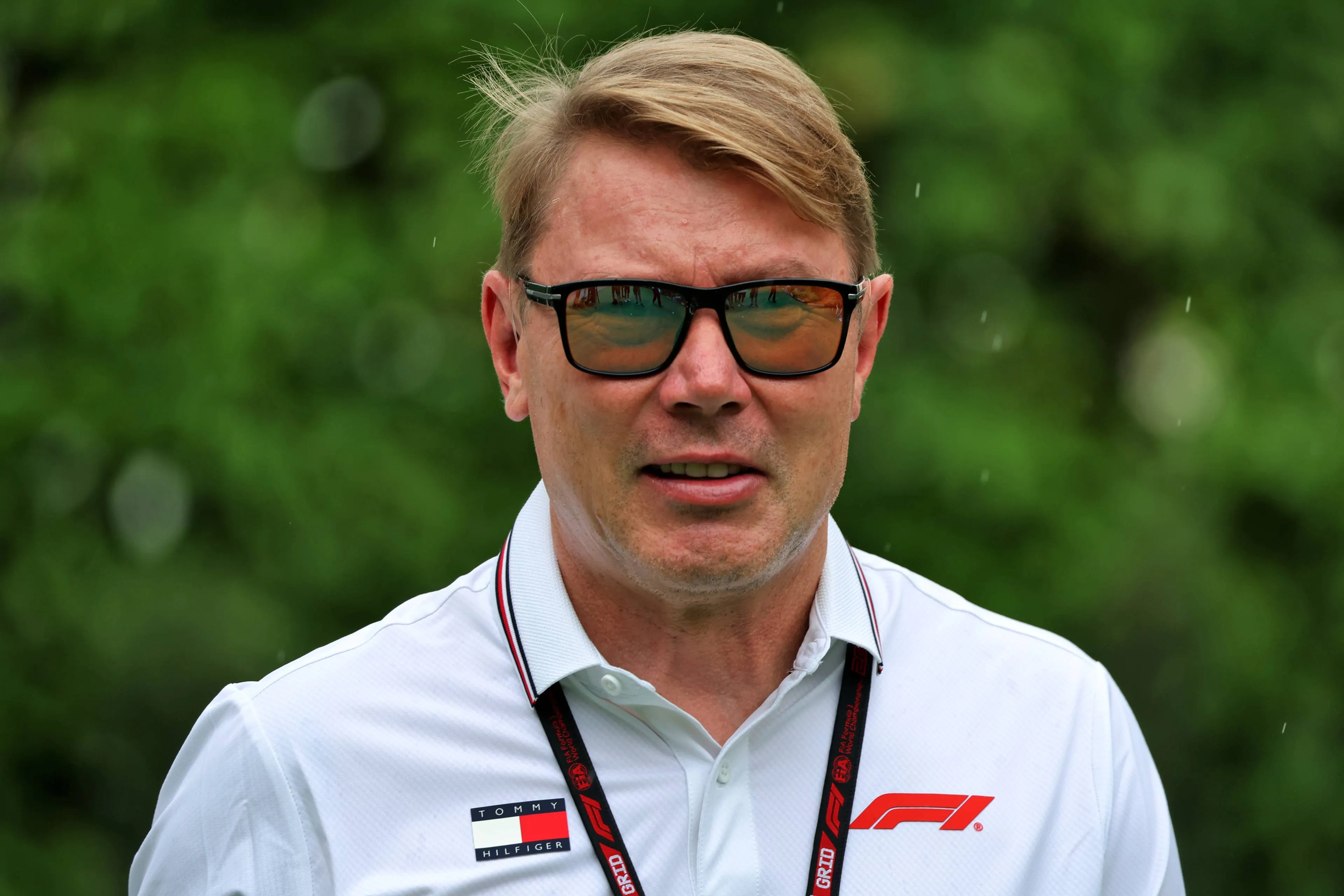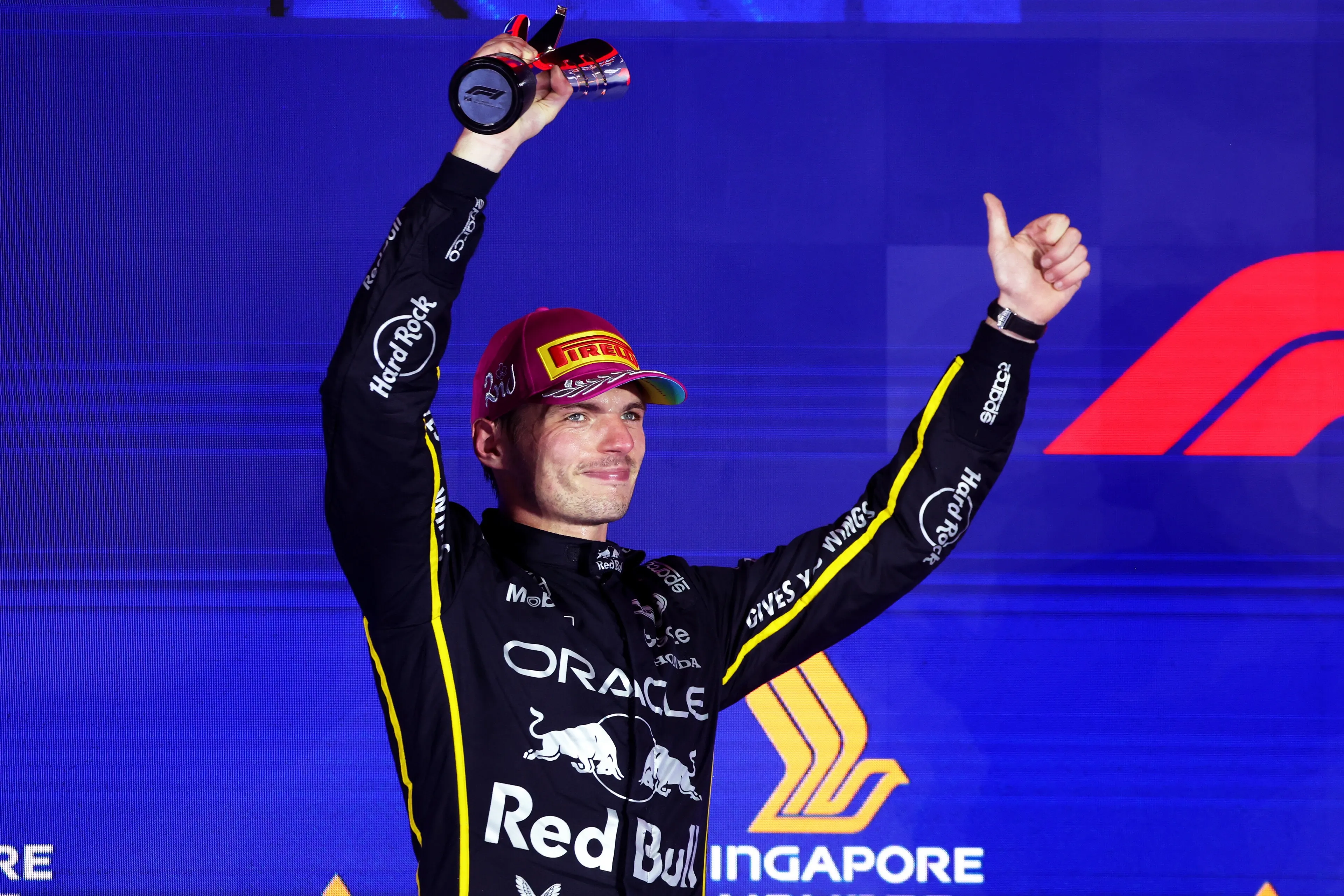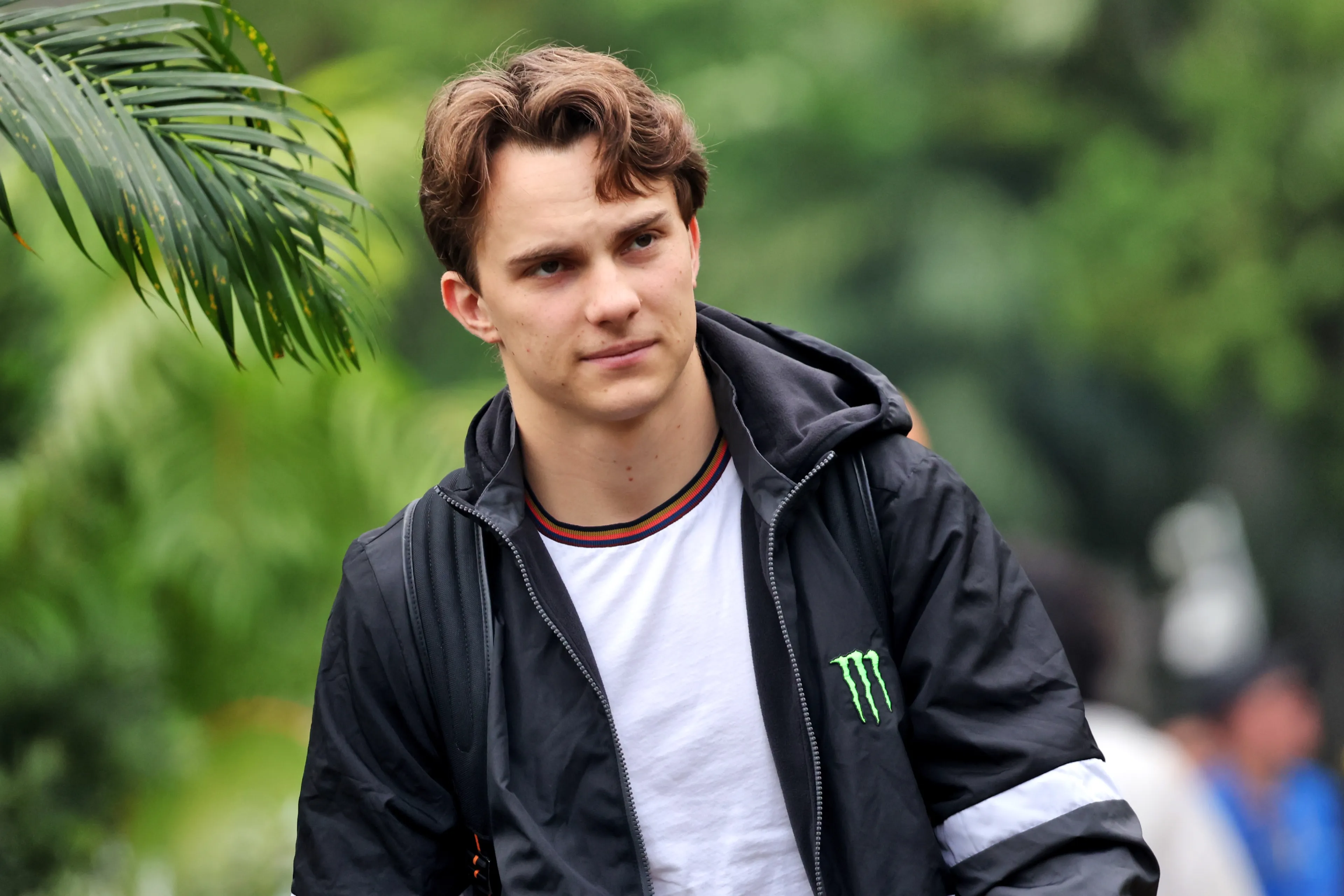The great step forward made by Red Bull with the new floor introduced in Monza allowed the Dutch World Champion to get his 6th Grand Slam of his career, on a low downforce track that exploited the RB21’s strengths. Let’s try to deep dive into the reasons behind this incredible performance.
For the Azerbaijan Grand Prix, Red Bull didn’t bring any major updates to their car, as most of the top teams, but kept using the same low downforce package already used last time out in Monza and on other low downforce layouts, like it happened in Spa-Francorchamps. This package included a low downforce rear wing, a top-flap-trimmed front wing and the revised floor (which featured minor changes) introduced in Monza.
Starting to analyse the floor, as highlighted in the drawing below, the only visible change concerning this new component was related to one of the two metal supports that connect the floor edge to the proper floor structure. In the revised version introduced in Monza, in fact, the inner element no longer protruded outwards, but was rather placed under the hole, to also act as a flow diverter (pink arrow).
This area of the floor is particularly important, as the more air gets sucked into this small hole, the higher the flow of air directed towards the diffuser and thus the more downforce generated. Already in Monza, this new component (which also included other ‘invisible’ changes beyond the one just mentioned), seemed to have made the RB21 much more stable in slow speed corners, deleting that tedious understeering that affected the car in those kinds of corners during the first half of the season.
Moreover, this new element also seemed to have allowed Red Bull to adopt even lower ride heights, to exploit the downforce generated from the Venturi channels, according to McLaren’s Team Principal Andrea Stella: “I believe they [Red Bull] slightly modified the car's configuration at Monza, so there's a good chance they unlocked some performance. From what Max is saying (on team radio), it seems they managed to find a way to run lower.”
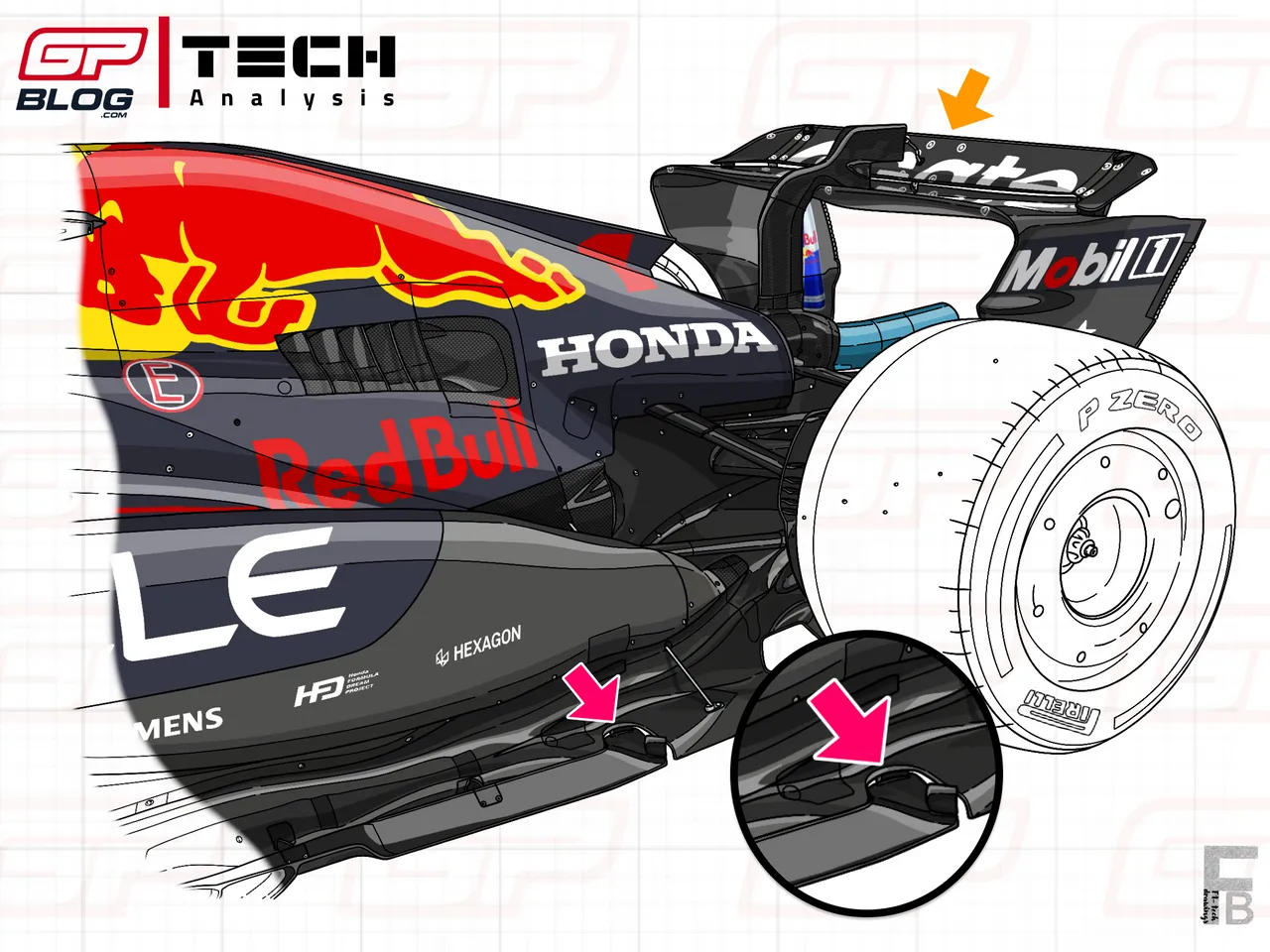
The positive impact of this new floor seemed visible also in Baku: together with the low downforce rear wing spec adopted on both cars since FP1 (orange arrow in the drawing above), the RB21 looked very stable in all slow speed sections, while having a very good traction and a very strong top speed, despite still low engine revs. The time set during this session was still far from being representative, with Verstappen finishing the session in P7 almost a second off from Norris in P1.
The team did some further changes for FP2: beyond the usual fine-tuning adjustments made on the car to find the right set-up, Red Bull’s engineers also decided to change the beam wing spec on both cars compared to the version used in the morning: as highlighted in the drawing below, the version used in FP1 was a double-element beam wing characterised by wavy lower element and a very skinny second element, designed to reduce drag while providing a little amount of vertical load (light blue arrow, left-hand side of the drawing).
For the afternoon session, the team decided to adopt the single element beam wing also used in Belgium, a spec characterised by a very low chord at the connection to the endplate and an increasing chord towards the connection to the rear impact structure, to provide a little bit more of rear stability in Baku’s windy conditions (light blue arrow, right hand side of the drawing).
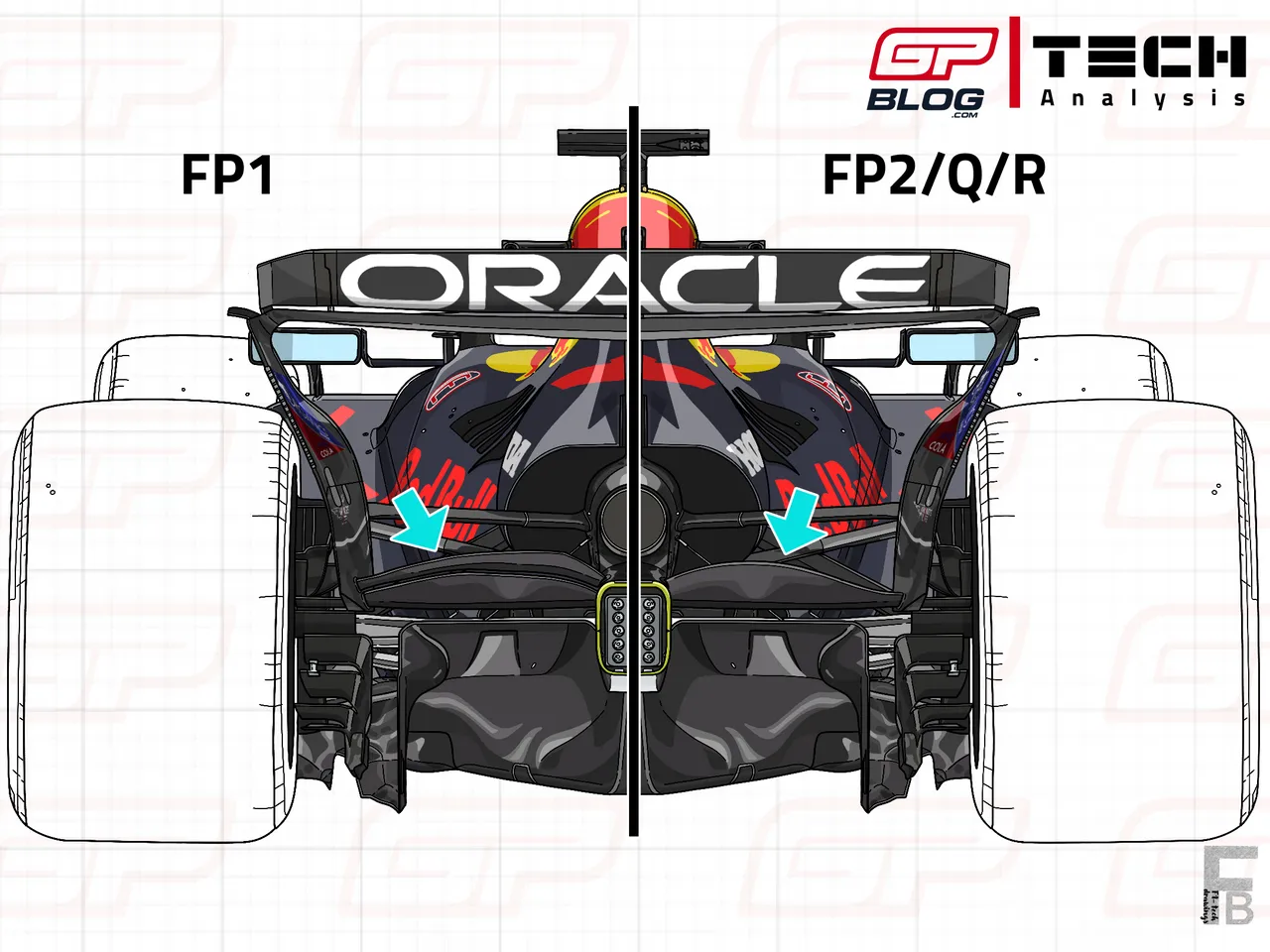
This wasn’t the only change the team made between practices: after using the same front wing during FP1, Tsunoda and Verstappen switched to two different solutions. The Japanese driver kept using the old spec, characterised by a longer-chord top flap (pink arrow), that provided a bit more downforce on the front axle, and a larger nose (green arrow).
Verstappen, instead, used the new front wing spec introduced in Zandvoort but with the top flap trimmed like in the one used in Monza (pink arrow): this version was characterised by a tighter nose (green arrow) and by a very small vortex generator (orange arrow) placed at the connection to the nose itself, which helped to keep the flow attached as it directed towards the bodywork.
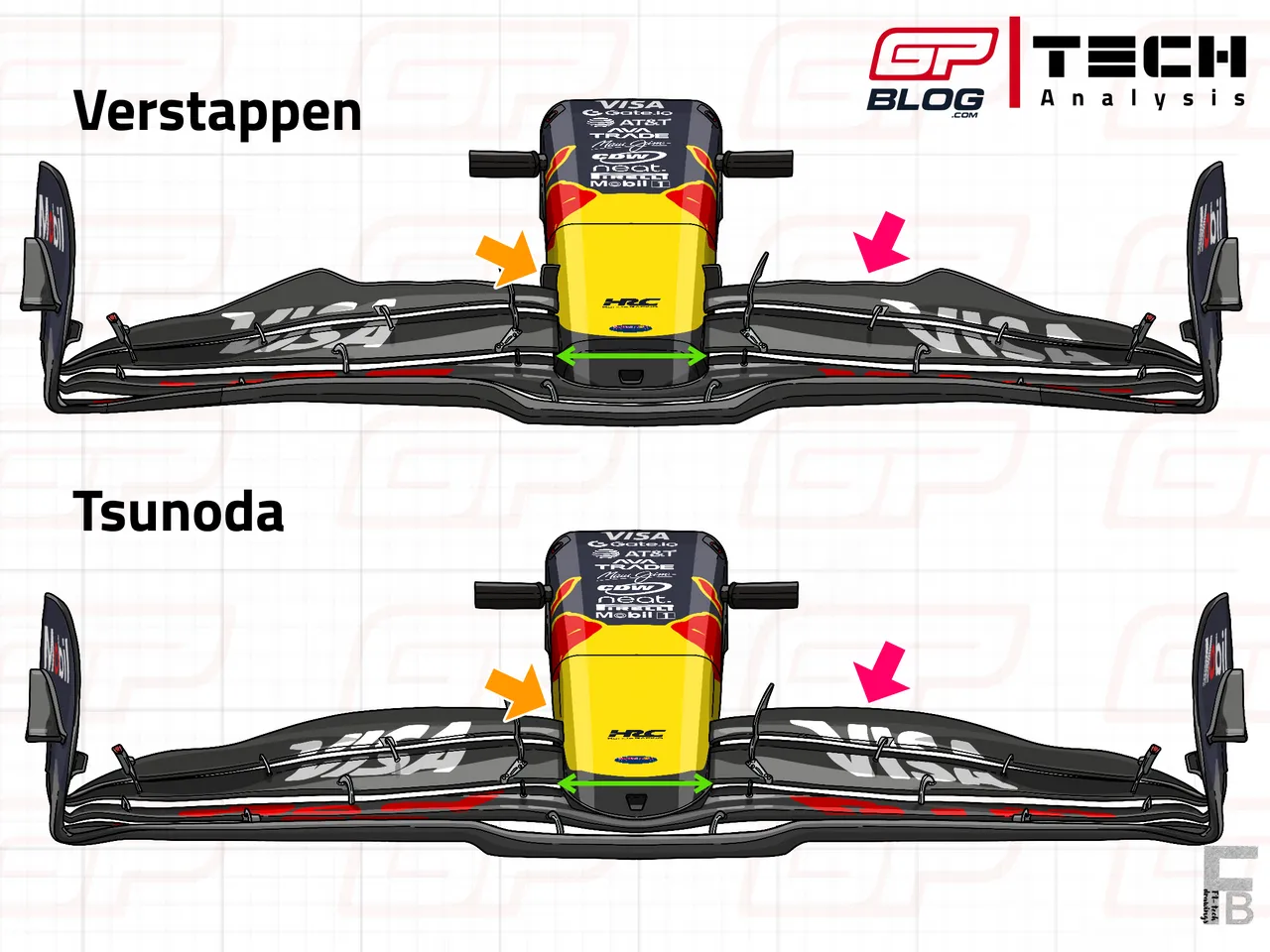
All these changes contributed in making both drivers much more comfortable with the RB21 during second practice: Verstappen’s performance in the qualifying simulation was still disappointing (he finished the session in P6, around 6 tenths behind Hamilton in P1), but he impressed during the race pace simulations, proving that the changes made by the team helped the RB21 put the tyres in the right working window and make them last over a series of laps with high fuel.
Verstappen himself confirmed the positive feeling during the usual post practice interviews: “It wasn’t too bad to be honest. What was positive for us was that the car felt quite good, so definitely seems like we found a stable balance. I think we’re still finding that little bit over one lap to get a bit more confidence. The long run felt okay.”
Read also
Dominant performance on Saturday and Sunday
After some more fine-tuning during Friday’s night, Red Bull’s set-up changes finally played dividends during Saturday’s qualifying: despite the tricky windy conditions and the slippery asphalt due to the rain, Verstappen managed to get the pole position, setting the fastest time on the weekend in Q3 on the soft C6.
Tsunoda ended the session in P6, more than a second slower than his teammate. The RB21 looked much stronger in all the slow speed sections, proof of a perfect mechanical set-up on both axles, which made it balanced and reactive in all the direction changes. Moreover, the higher engine modes provided the additional top speed that lacked on Friday, while the new floor guaranteed that stability needed to extract the final performance.
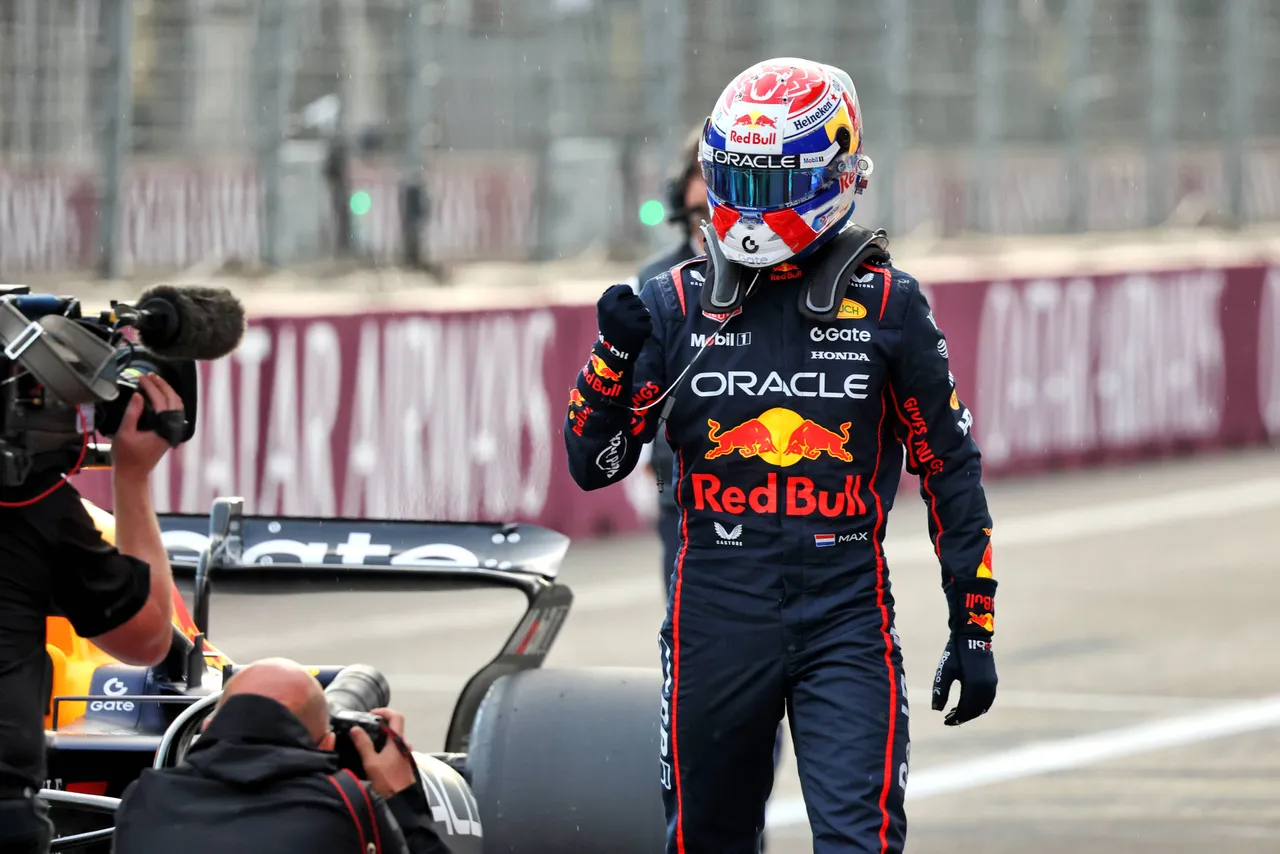
The result of all these factors was one of the best results of the team in qualifying since the beginning of the year, proof of the positive step forward done by the team since Laurent Mekies’s arrival back in July.
The new Team Principal, in fact, commented the changes that made this comeback possible as follows: “We think there is a combination of a lot of small details that have extracted more performance out of the car, and of course part of that is on the floor, part of that is some of the changes we have made.”
After such a positive qualifying and with no real opponents close to him, it was one of the smoothest Sundays for Verstappen, who was able to the lead all the laps of the race and secure the fastest lap, earning his 6th Grand Sam of his career. On the other side of the garage, it was a very positive race for Tsunoda as well, who managed to keep both Norris and Leclerc behind him, finishing the race in P6, exactly where he started.
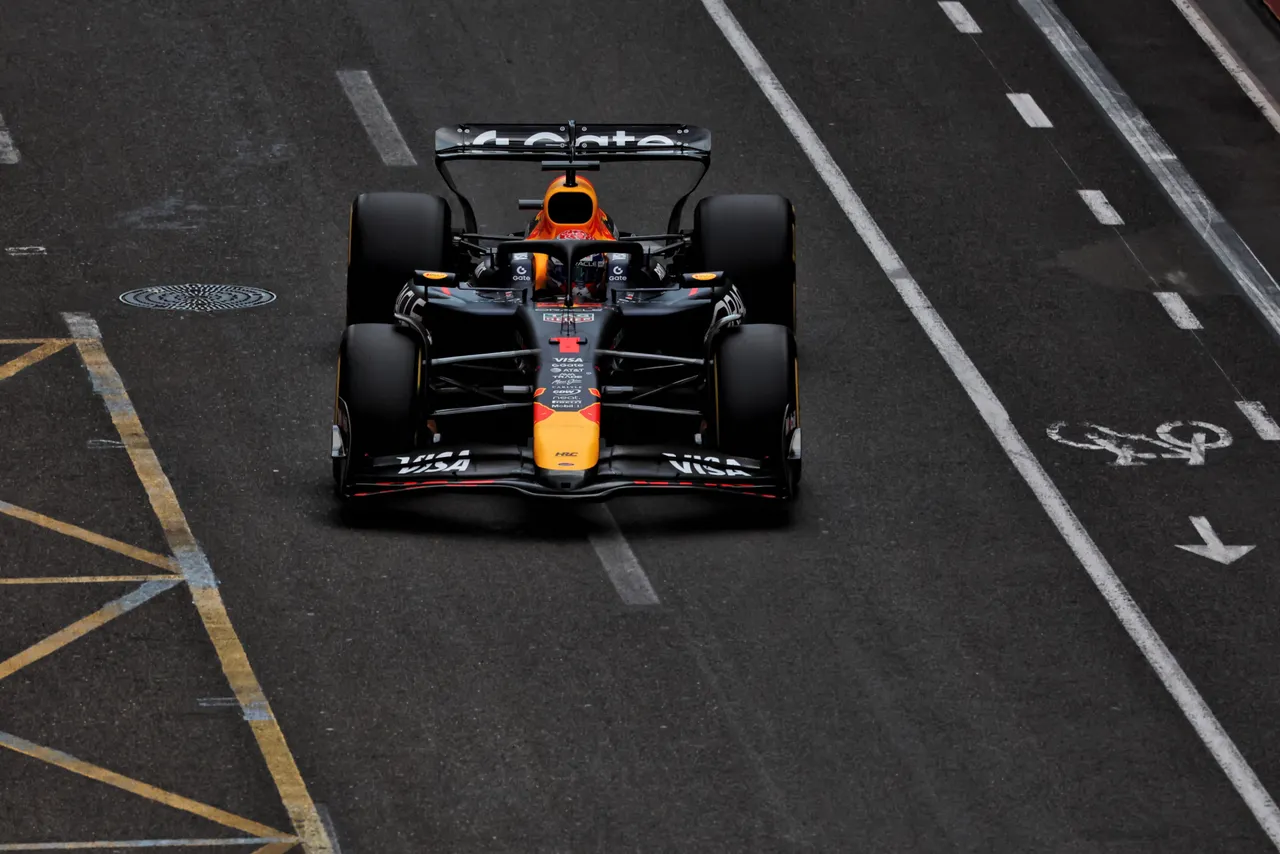
Verstappen’s performance during the race was also favoured by many factors:
- First of all, the very smooth nature of the asphalt reduced the tyre degradation to almost zero, with drivers completing 2/3 of the race on one compound without significant tyre wear, which flattened the performances of the top team cars from the tyre management point of view (as also happened in Monza);
- Secondly, the very cool temperatures faced during the race (the asphalt temperature never went over 25°C), inevitably made tyre warm up extremely difficult, especially for the hard tyres. At the same time, it reduced rear tyre overheating, favouring teams like Red Bull and Mercedes over McLaren, whose MCL39 becomes the strongest when it comes to managing hot temperatures on the rear axle (as it happened in Bahrain and Miami);
- Last but not least, the low downforce wings adopted for this Grand Prix made overtaking extremely difficult, blocking Norris and Leclerc for the whole race and allowing Verstappen to make his own pace without proper rivals for the victory.
The combination of all these elements led to a race that in some way seemed reminiscent the Italian Grand Prix that took place a couple of weeks ago. Red Bull’s performance, also thanks to the introduction of the new floor, has clearly improved, with the RB21 being much more stable in this kind of layouts. It’ll be however interesting to evaluate their perfomance on a completely difficult layout such as Singapore, where the hot conditions, the rear tyre deg and high downforce set-ups will be the main talking points of the weekend.
Read also
Popular on GPBlog
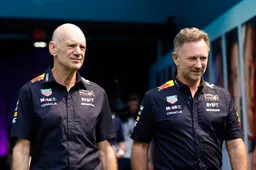
Aston Martin has informed staff following rumors about Horner’s arrival
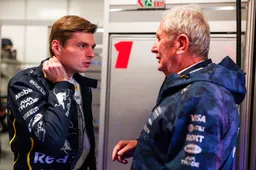
Marko identifies Verstappen's problem during Sprint Qualifying
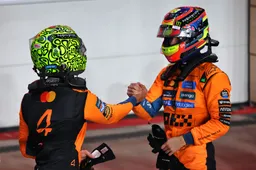
What Norris needs to do to clinch his first drivers' title in Qatar GP



